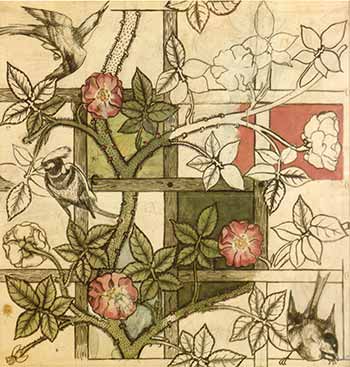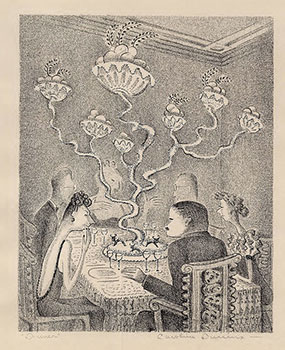"designpodcast" entries

Airbnb’s design approach
The O’Reilly Design Podcast: Katie Dill on designing for seven billion people, hiring good people, and the triforce.
Subscribe to the O’Reilly Design Podcast, our podcast exploring how experience design — and experience designers — are shaping business, the Internet of Things, and other domains.
In this week’s Design Podcast episode, I chat it up with Katie Dill, head of experience design at Airbnb. Dill talks about Airbnb’s values; the relationship between design, engineering, and product management; and what Airbnb looks for when hiring. Dill also will be keynoting at O’Reilly’s inaugural Design Conference.
Here are a few highlights from our conversation:
We have a few different ways of looking at the values that are behind our work and the way we do our work, and the team behind it. For a starting point, our company has core values. There are six points, which are actually on our website, that drive the values of all the people that work here. Some of which are things like championing the mission or embracing the adventure and having an entrepreneurial spirit.
Pretty much behind all the design work — and the thinking and processes of the people that work here — are three values we hold dear: being a host, simplifying, and every frame matters. Those three become really powerful in our design decisions and we translate that to our work. So, in being a host, we think about how we use the digital platforms that we design for to help people along in their journey, to invite them into an experience or a new part of the world. … Even our content choices, the language that we use, we try to make it really comforting, accessible, very human, just like a host would. That same thing goes with simplify. We want to be clear and to the point, and so we reduce the noise. Every frame matters references the frames of a storyboard, so every frame meaning that every point in the journey matters. … It’s not just about one screen that someone looks at or it’s not just about the app; it’s not just about one moment in time.

Data, design, and intuition
The O’Reilly Design Podcast: Pamela Pavliscak on designing for happiness.
Subscribe to the O’Reilly Design Podcast, our podcast exploring how experience design — and experience designers — are shaping business, the Internet of Things, and other domains.
In this week’s Design Podcast episode, I sit down with design researcher and data scientist Pamela Pavliscak. Pavliscak is the author of Data-Informed Product Design, a free report from O’Reilly, and will be speaking at OReilly’s inaugural design conference.
Pavliscak talks about the delicate relationship between data and design, and why it’s not an either or proposition, as well as why designing for happiness is good for business.
Here are a few highlights from our conversation:
We like to think in dichotomies for when it’s either data or intuition. I think of it more like archaeology. Archaeology is not always about finding the big celebrities or what the important heroes and personalities of history do. It’s about learning more about the everyday practices of people. You have these clues, these traces left behind. Like archaeology, the science gets more sophisticated. Archaeologists have remote sensing and X-ray guns. Data scientists have algorithms and AI. The big difference is, these people that we’re learning about with data science are still around. We can learn about them in their own words and rely on them to share their feelings and their context. For me, it’s not really an either-or, but more of kind of an improv ‘yes-and’ kind of relationship.
I always suspected that delight, that concept that we have in design, wasn’t the full story of what made people happy. The small moments, the small pleasures certainly factored in, but it really seemed that the patterns fell into this kind of deeper meaning. I would see people for Humans of New York — this is the happiest site in the world for people. Not in the sense that it’s showing happy things, but because it makes people feel connected. It’s connected to a story, and it’s connected to a story that’s not complete. There’s still room for people. Those are the kind of moments that came out.
You’ll find that happier employees are more productive and they find more meaning in their work at the same time. Even way back to the 80s, I found some research on product detachment, and found that happiness and brand detachment are somehow linked together. There’s Martin Seligman’s PERMA, there’s subjective well-being scale, there’s Maslow’s hierarchy, which of course we all know by heart. Countries are applying happiness initiatives to supplement their GDP. We’re learning more about this through behavioral economics and these different models.

Design for the greater good
The O’Reilly Design Podcast: Gretchen Anderson on designing for social impact.
Subscribe to the O’Reilly Design Podcast, our podcast exploring how experience design — and experience designers — are shaping business, the Internet of Things, and other domains.
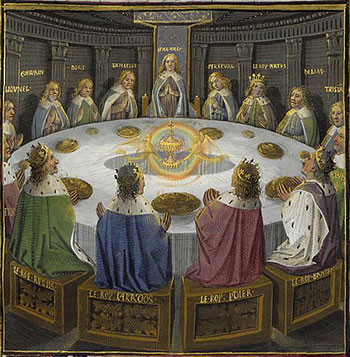 In this week’s Design Podcast episode, I sit down with designer Gretchen Anderson. Anderson is the author of the free O’Reilly report Designing for Social Impact and a program committee member for OReilly’s inaugural design conference, where she is also moderating a panel on designing with data for social impact.
In this week’s Design Podcast episode, I sit down with designer Gretchen Anderson. Anderson is the author of the free O’Reilly report Designing for Social Impact and a program committee member for OReilly’s inaugural design conference, where she is also moderating a panel on designing with data for social impact.
In this podcast episode, Anderson talks about design as a force to improve our lives and about approaching design as an inclusive discipline.
Here are a few highlights from our chat:
Forget the color palette conversations. Stop trying to make everyone understand the craft of design any more than they want to — just take your seat at the table. Greg Petroff talks about how designers can be a little bit paranoid by nature. I think that comes with the territory. There can be a lot of ‘us and them’ — I think it’s important to really drop that way of thinking. Not everyone does what you do, but that does not mean that you aren’t part of a larger ecosystem; you want to foster that creative part of bringing everyone together.
Design is about finding and testing and being able to hold a point of view on what people need and want, whatever your mission or enterprise is, and being someone who can reconcile constraints into something awesome, not just the sad compromise of everyone’s democracy. Have the bravery and the skills to hold that and the relentless passion and patience for refinement of an idea, even the bad ones sometimes.

Designing responsibly in the attention economy
The O’Reilly Design Podcast: Tristan Harris on design ethics and leaving things better than you find them.
Subscribe to the O’Reilly Design Podcast, our podcast exploring how experience design — and experience designers — are shaping business, the Internet of Things, and other domains.
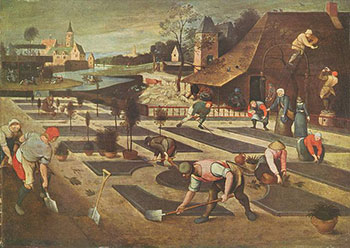 In this week’s Design Podcast episode, I sit down with Tristan Harris, design thinker, entrepreneur, and philosopher at Google, and speaker at O’Reilly’s first design conference.
In this week’s Design Podcast episode, I sit down with Tristan Harris, design thinker, entrepreneur, and philosopher at Google, and speaker at O’Reilly’s first design conference.
Harris talks about Design for Time Well Spent, the Doubt Club, and why it’s important to leave things better than you find them.
Here are a few highlights from our chat:
I think one aspect of why designers need to design responsibly is this new scale, this new proportion of influence and impact — because one choice about whether something takes five seconds of someone’s life versus one second of someone’s life gets multiplied by a billion people.
Even when the intention is very good and very positive, it devolves into what I’ve called the ‘race to the bottom of the brain stem’ to seduce people’s psychological instincts. The best way to get time from people, the best way to seduce or get their attention, is to use people’s psychological biases in a way that gets them to come back or stay.
Part of being ethical means being deeply thoughtful, comprehensive — not just optimistic about the one goal that you have, but to see where that goal might break down.

Design is how users feel when experiencing products
The O’Reilly Design Podcast: Cindy Alvarez on emotion, user research, and why Craigslist is great design.
Subscribe to the O’Reilly Design Podcast, our podcast exploring how experience design — and experience designers — are shaping business, the Internet of Things, and other domains.
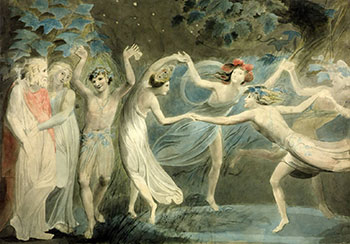 In this week’s Design Podcast episode, I sit down with Cindy Alvarez, a designer at Microsoft, author of Lean Customer Development, and member of our program committee for O’Reilly’s first design conference.
In this week’s Design Podcast episode, I sit down with Cindy Alvarez, a designer at Microsoft, author of Lean Customer Development, and member of our program committee for O’Reilly’s first design conference.
Alvarez talks about how design is changing, how the approach to design at Microsoft is changing, and user research misperceptions and challenges. She also offers advice to those who are insisting all designers should code.
Here are a few highlights from our chat:
Steve Jobs has said that, “Design is not how it looks, it’s how it works.” I would go one step further and say, “Design is how you work.” When you’re using something, how do you feel … How are you feeling more capable — do you feel smarter? Do you feel stronger? Do you feel stupider? Design is how you feel when you are using things or having experiences.
The ‘butt-brush’ effect comes from the wonderful Paco Underhill book Why We Buy. … Specifically, the butt-brush phenomenon is people looking at products that they really wanted to buy, but the store layout made it so people were bumping into them. That was such a strong push to get them to abandon what they were doing … that they’d just get up and walk away. He theorized about people feeling vulnerable, and undoubtedly there’s some sort of evolutionary thing about woolly mammoths sneaking up on us or something. I think it’s just, on a more base level, people feel clumsy. They feel fat, they feel clumsy and awkward, and we don’t like that at all.

Privacy and security are every UX designer’s responsibility
The O’Reilly Design Podcast: Ame Elliott on UX privacy and security, and how architecture informs her design work.
Subscribe to the O’Reilly Design Podcast, our podcast exploring how experience design — and experience designers — are shaping business, the Internet of Things, and other domains.
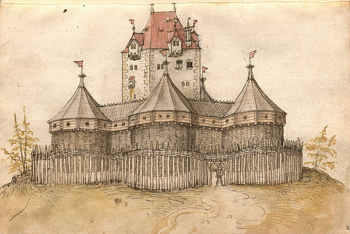 In this week’s Design Podcast episode, I sit down with Ame Elliott, design director at Simply Secure. She addresses the relationship between — and challenges of — privacy and security, noting “there’s plenty of tough to go around.”
In this week’s Design Podcast episode, I sit down with Ame Elliott, design director at Simply Secure. She addresses the relationship between — and challenges of — privacy and security, noting “there’s plenty of tough to go around.”
Elliott also talks about how her experience of attending architecture school informs her design work, and looks at the responsibility of designers to create for a greater good.
Here are a few highlights from our chat:
I think architecture can be a wonderful form of a design-inspired liberal arts education. If you look at places like Italy, I think there are certainly ways that you can go to architecture school and not be set up to practice architecture. The studio experience of actually being together in this communal space, working on a drafting table, making things visual — it’s so foundational to a lot of the things that are called ‘design thinking’ today.
Privacy or confidentiality is one technical goal of security. There are other technical goals of security: integrity, non-reputability, and other kinds of things. Coming at this from a human-centered design perspective … I care about what end users experience, and privacy feels like the quality people are looking for in an interaction.

Designing at Nasdaq
The O’Reilly Design Podcast: Aaron Irizarry on getting and keeping a seat at the table.
Subscribe to the O’Reilly Design Podcast to explore how experience design — and experience designers — are shaping business, the Internet of Things, and other domains.
Welcome to the inaugural episode of our newly launched O’Reilly Design Podcast. In this podcast episode, I chat with Aaron Irizarry. Irizarry is the director of UX for product design at Nasdaq, co-author of “Discussing Design” with Adam Connor, and a member of the program committee for O’Reilly’s Design Conference.
Design at Nasdaq: A growing team
I first noted Nasdaq’s commitment to design when talking to Irizarry about his book and the design conference hosted by Nasdaq that Irizarry helps develop:
It’s interesting to see an organization that didn’t have a product design team as of, what — 2011, I believe. To see the need for that, bring someone in, hire them to establish a team (which is my boss, Chris), and then see just the transition and the growth within the company, and how they embraced product design. We had to work a lot, and really educate and pitch in the beginning, explain to them the value of certain aspects of the job we were doing, whether that was research, usability, testing, why we were wanting to do more design of browser and rapid prototyping, and things like that.
…
We believe we’re helping structure and build, and I think we still have work to do as a design-led organization. We recently did our Pro/Design conference in New York. Our opening speaker was the president of Nasdaq, and to hear her reference the design team’s research, and to be in marketing meetings, and discussing the personas that we created, and to hear the president of Nasdaq speak about these kind of artifacts and items that we feel are crucial to design and the design process, it was a mark for us like, ‘We’re really starting to make a mark here. We’re starting to show the value of what these things are,’ not just because we want design, but we believe that this approach to design is going to be really good for the product, and in the end, good for the business. Read more…

